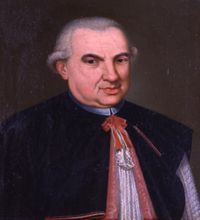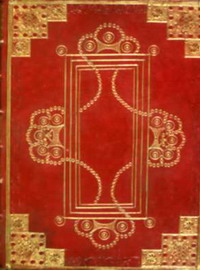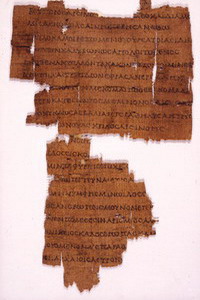Amongst the treasures of the Laurenziana are listed some of the most
ancient or unique manuscripts containing Tacitus, Pliny, Aeschylus,
Sophocles and Quintilian, the codex of Vergil, corrected in 494 by Turcius
Rufius Apronianus Asterius, and the oldest extant copy of Justinian's Corpus
Iuris, copied just after its promulgation. The Laurenziana also preserves
one of the three complete collections of Plato's Dialogi in so called carta
bona, given by Cosimo the Elder to Marsilio Ficino to translate, the
Squarcialupi codex, the only existing source for the study of profane music
between the thirteenth and fourteenth centuries, some autographs of Petrarch
and Boccaccio, the Storie by Guicciardini with notes by the author as well
as the autograph biography of Benvenuto Cellini.
In particular, the Library bears witness to some of the most significant stages of Florentine Renaissance. Coluccio Salutati, Poggio Bracciolini, Niccolò Niccoli, Marsilio Ficino and Pico della Mirandola are all present in the collections not only as authors but as copyists and owners of manuscripts as well. The codices in the Laurenziana also offer many splendid examples of Humanistic reformed script and of the art of the Florentine schools of illumination inspired by Cimabue, Botticelli, the Pollaiolo and Ghirlandaio. Thus, the pursuance of excellence has inspired the growth of the Laurenziana ever since its beginning: from Cosimo de'Medici, tireless founder of libraries, to his descendants, Lords of Florence and Popes of the Holy Roman Catholic Church; from the Medici Grand Dukes to those from Lorraine, who followed their example with intelligence and liberality, up until the enlightened ministers of the newly formed Italian State. As can be expected, such growth was ensured through expropriations, donations and acquisitions.
Two key-dates mark the story of the Library.
Go up
Between the 18th and the 19th cent
 In 1757 Angelo Maria Bandini was appointed Librarian of the Laurenziana:
during nearly fifty years of office he managed an extremely shrewd
acquisition policy and published a series of monumental catalogues of the
collections, still unrivalled.No great changes occurred in the Library's
organization in the two centuries that followed Bandini's death in 1803. The
manuscripts coming from libraries once belonging to private families or
religious houses suppressed by wish of the Great Duke Pietro Leopoldo or
Napoleon were distributed amongst the Florentine libraries according to the
usual criterion: the Laurenziana received the Greek and Latin classics, the
illuminated specimina as well as an extremely interesting group of Oriental
codices. Finally, in 1783, some of the most precious exemplars of the Medici
library kept at Palazzo Pitti and passed on to the Biblioteca Palatina
Lorenese entered the Laurenziana.
In 1757 Angelo Maria Bandini was appointed Librarian of the Laurenziana:
during nearly fifty years of office he managed an extremely shrewd
acquisition policy and published a series of monumental catalogues of the
collections, still unrivalled.No great changes occurred in the Library's
organization in the two centuries that followed Bandini's death in 1803. The
manuscripts coming from libraries once belonging to private families or
religious houses suppressed by wish of the Great Duke Pietro Leopoldo or
Napoleon were distributed amongst the Florentine libraries according to the
usual criterion: the Laurenziana received the Greek and Latin classics, the
illuminated specimina as well as an extremely interesting group of Oriental
codices. Finally, in 1783, some of the most precious exemplars of the Medici
library kept at Palazzo Pitti and passed on to the Biblioteca Palatina
Lorenese entered the Laurenziana.

In 1818 the Florentine bibliophile Angelo Maria d'Elci donated his precious collection of Greek and Latin classics to the Library, all first editions which he had recently rebound, and at the end of the nineteenth century (1884) the Laurenziana acquired the library belonging to Lord Bertram Ashburnham. The latter comprises many splendid items such as the treatise Architettura civile e militare by Francesco di Giorgio Martini, the manuscript of Petrarch's Rime with the arms of Galeazzo Maria Sforza and also a precious little Book of Hours, probably owned by a member of Lorenzo il Magnifico's family.

The papyri collection, which counts around 2,500 items, is certainly an unusual sight amongst Italian and foreign libraries alike. It's origin can be ascribed to the various campaigns which Italian papyrologists organized in Egypt at the beginning of the twentieth century. Owing to their discoveries, the Laurenziana boasts unique witnesses of the literary production of the ancient world such as verses by Sappho and Callimachus. Having survived the risks of WW2 by storing the manuscripts in the Abbey of Passignano and the benches (the so-called plutei) in the vaults of S. Lorenzo, the Biblioteca Medicea Laurenziana is still, today, an inexhaustible source for classical and humanistic scholars. Finally, the Library's acquisitions policy involves the buying of significant exemplars papyri, tablets, codices, rare prints and documents from international antique dealers. The manuscripts and documents thus acquired augment the Acquisti e doni holding, the only one which is still open and comprises, at the moment, around 900 items.